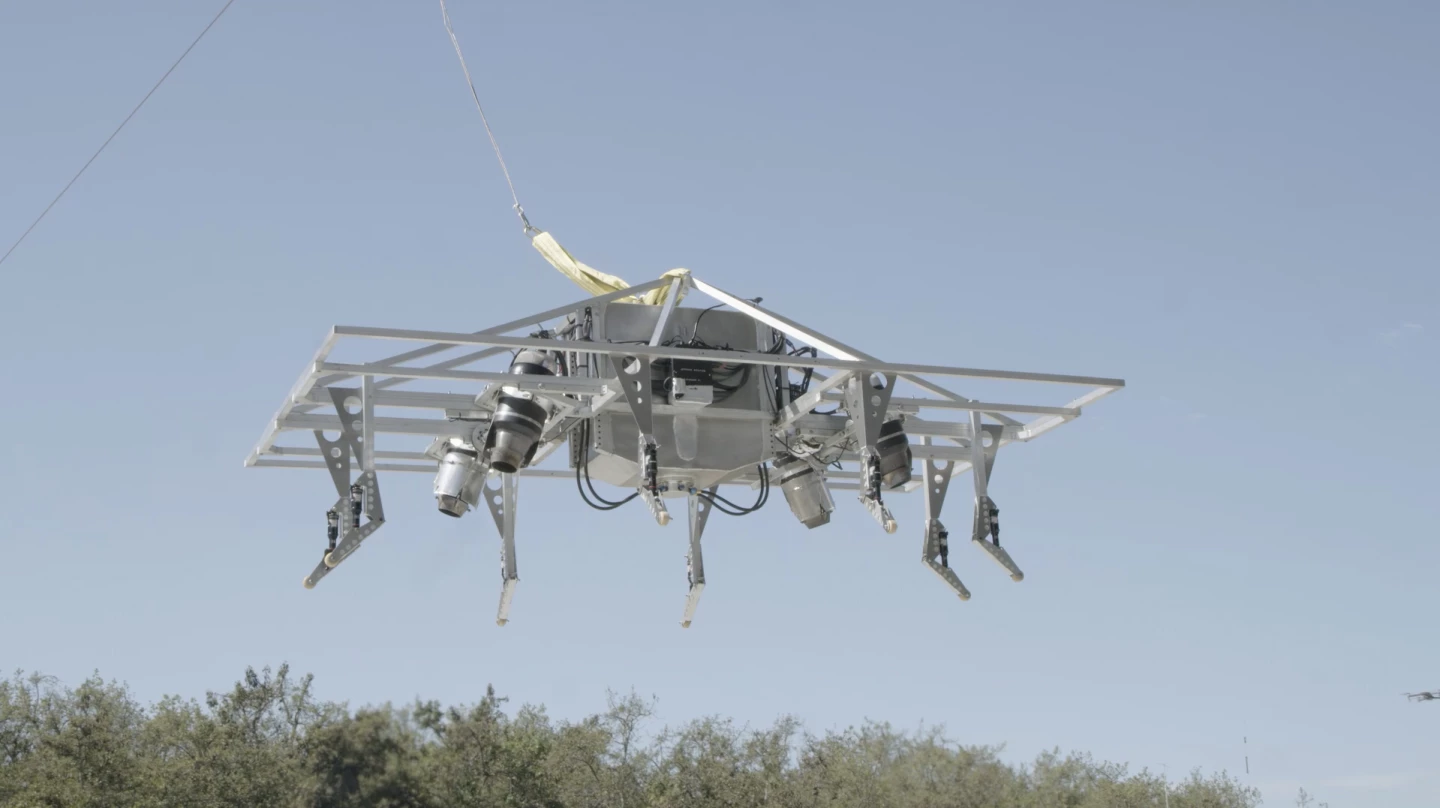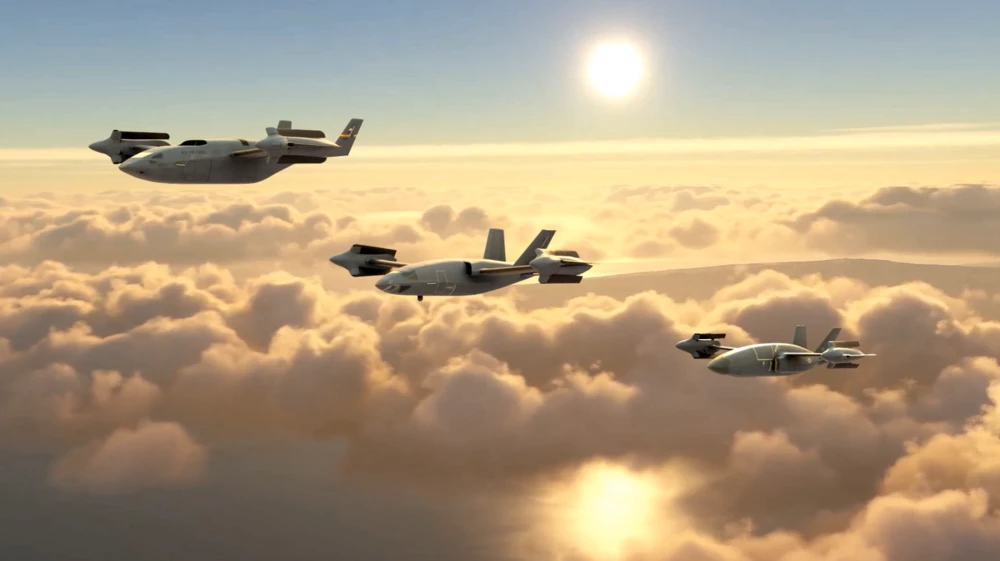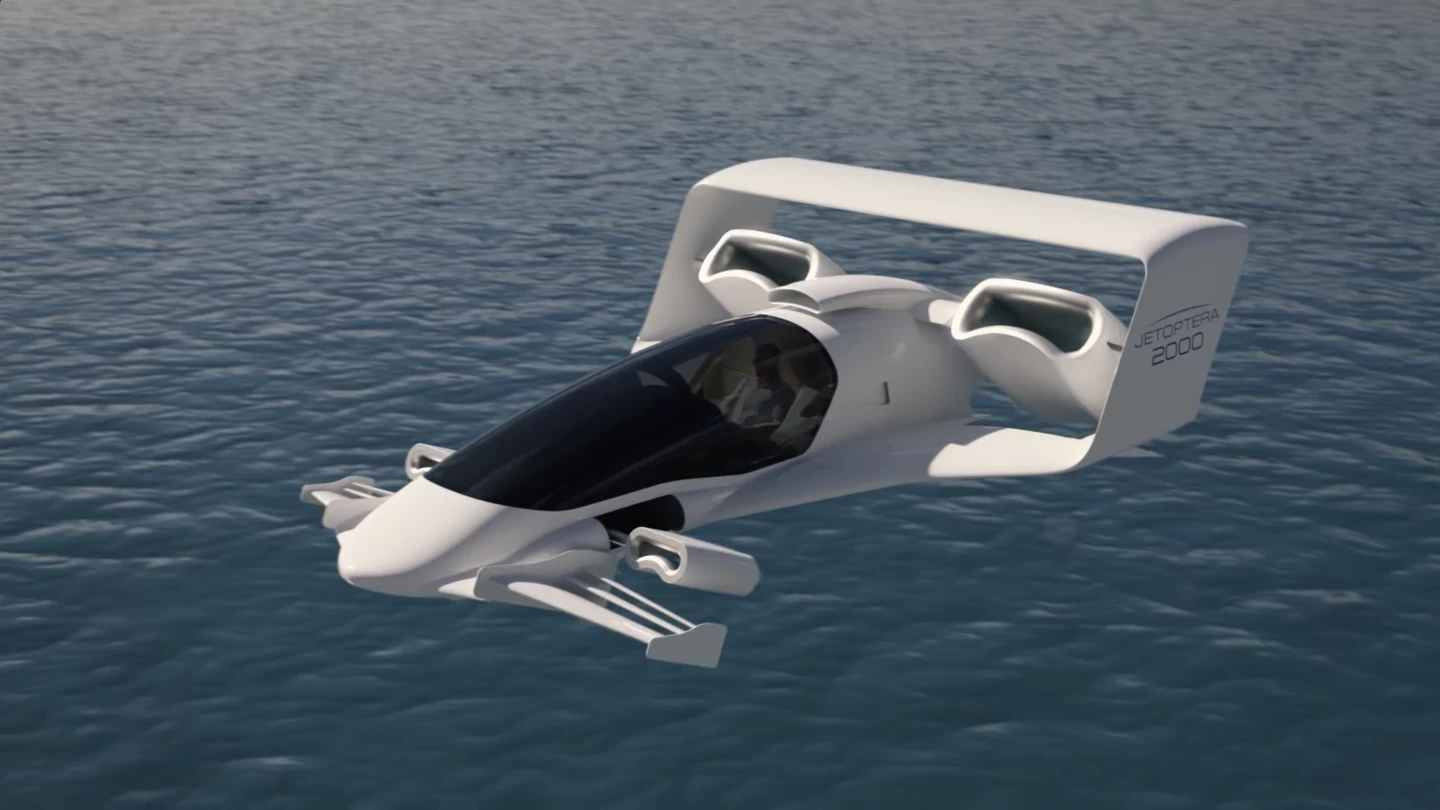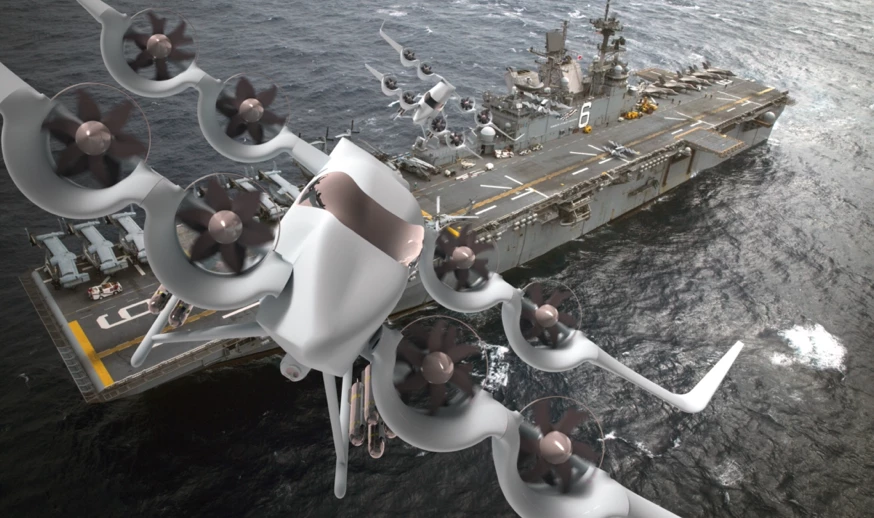Forget your friendly little electric air taxis. The US Air Force wants to take things up a notch with a new generation of high-speed vertical takeoff and landing aircraft. Thirty five designs have been selected, here's a peek at just a few to catch our eye.
AFWERX is a US Air Force program first announced in 2017, designed to encourage a culture of innovation in the service, both by promoting interesting ideas raised internally and by getting involved with the entrepreneurial tech sector to draw in and fast-track the best ideas in the civilian world as well. It's not just to get sweet new gadgets into the field; America's national security depends on a thriving commercial technology sector, and one of AFWERX's aims is to give US companies a leg-up on development where it's prudent.
AFWERX put the call out in June for companies to make submissions on a new High-Speed VTOL (HSVTOL) challenge. Its current VTOL aircraft get plenty of use thanks to their runway-free convenience and operational flexibility, but its most common helicopter, the Sikorsky HH-60 Pave Hawk, is limited to a speed of 193 knots (222 mph, 357 km/h), due to retreating blade stall.
The famous tilt-rotor Bell Boeing V-22 Osprey is a bit more sprightly, topping out at 305 knots (351 mph, 565 km/h) provided you keep it over 15,000 feet, but it's even more complex than a helicopter, and costs around US$75 million a piece. Various high-speed helicopters are in development, using coaxial twin rotors on top, spinning in opposite directions to cancel out retreating blade stall, but they're going to be hideously complex as well – heck, helicopters are complex enough to start with – and they'll be lucky to keep up with an Osprey in a straight line.
Hence the HSVTOL challenge, which seeks agile designs that can get people and cargo in and out of contested territory as fast as possible. The challenge overview laid out some key wish-list items, including jet-like speed, airborne transition between hover and cruise modes, increased range and endurance, in-air refueling capability, and flexible payload capabilities. Bonus points would be awarded if the design could fit on a standard pallet, or run its own smart collision and threat avoidance systems.
From 218 applicants, the AFWERX team has chosen 35 designs, which it has presented recently in an HSVTOL showcase. AFWERKS has not yet announced the winners, but some of the companies themselves have made their own announcements. So here are some of the finalists that have caught our eye so far.
Jetpack Aviation: the Speeder

Conceived as a flying motorcycle and built as a jet-powered version of a multicopter drone, the Speeder is evolving into a super-flexible platform capable of high speed, long endurance and extreme agility, either in manned operations or as an autonomous or remote piloted cargo drone.
This company started out making some of the world's first fully operational turbine-powered jetpacks, and the Speeder will likewise run on a number of small jet turbines using a thrust-vectoring system designed, coded and tested in-house by JPA. It'll fit on a pallet or in a trailer, with attachable "wet wings" adding cruise efficiency and fuel to boost range where required.
The Speeder's jet turbines can operate comfortably at 530-odd knots (610 mph, 980 km/h) and above, and JPA's David Mayman tells us the Speeder platform itself could go "potentially well over" 260 knots (300 mph, 482 km/h), particularly in a fully-enclosed cargo version.
Civilian flying motorcycle versions are planned. Learn more about the Jetpack Aviation Speeder, including an in-depth interview with founder David Mayman and prototype test video.
FusionFlight: the JetQuad

In a similar vein, the JetQuad is another quad-turbine VTOL drone that self-balances on fast-responding thrust-vectoring nozzles. Billed as a "quadcopter on steroids," this is a smaller design than the Speeder, closer to the size of a large suitcase than a full-size pallet, and weighing in at just 50 lb (23 kg). Presumably the concept will scale well.
Fusionflight has been flying these for some time now, again using automated flight control. The current AB5 prototype can carry 40 lb (18 kg) of cargo, and a proposed customer variant is already promising speeds over 260 knots (300 mph, 482 km/h). Learn more about the FusionFlight JetQuad.
Bell: HSVTOL

At the larger end of the scale is Bell's vision for what effectively looks very much like an Osprey on amphetamines. The HSVTOL design takes off using a pair of Osprey-style rotors, which tilt forward for horizontal flight. But the rotor nacelles also appear to house jet engines, which (along with a third jet in the fuselage) take over for cruise flight, allowing the rotors to fold back into a low-drag cruise mode.
They'll need to; Bell says this thing will be capable of cruising at speeds over 400 knots (460 mph, 740 k/h). It'll allegedly scale anywhere from 4,000 to 100,000 lb (1,800 to 45,000 kg), it'll offer some degree of hover endurance, and can be configured for manned or unmanned operation.
There's no prototype yet, and Bell appears to see it as somewhat of a long shot, but the company is working closely with its well-established military connections to move the concept forward. Learn more about the Bell HSVTOL.
Advanced Tactics / RotorX: The Barracuda

This is another big fella. The Barracuda is the closest design to the current wave of eVTOL air taxis – at least in VTOL mode, where it effectively looks like a 14-seat airplane with a large quadcopter system built in. It's not electric, though; it uses four individual turboprop engines to power its rotors, presumably using variable blade pitch control to balance the aircraft in a hover.
Moving into cruise mode, the front props tilt downward, and the rear ones upward, each on long pylons so that both banks of huge rotors get access to a clean airflow, and all can contribute to the forward thrust. The Barracuda promises an impressive 480-knot (550 mph, 890 km/h) top speed, with up to 12,500 lb (5,670 kg) of cargo or up to 14 passengers in a pressurized cabin, giving the aircraft access to a 40,000-ft service ceiling. Learn more about the Barracuda.
Jetoptera / Northrop Grumman: HSVTOL aircraft system with adaptive fluidic propulsion

We don't actually know anything about the aircraft Jetoptera has presented for the HSVTOL challenge, other than it'll be designed and built in conjunction with aerospace giant Northrop Grumman. We do, however, understand Jetoptera's key IP: its "fluidic propulsion system."
Described to us as "bladeless fans on steroids," this is a remarkable propulsion system that takes a flow of compressed air, agnostic of supply, and forces it over and around an aerodynamically shaped loop, much like pushing it over a big wing, except that it folds around on itself. Instead of creating lift, this low pressure zone creates a vortex in the middle of the thrusters that forces ambient air through much faster. Like a Dyson bladeless fan, it takes a small flow of compressed air and uses it to suck through a much greater volume and create thrust.
Jetoptera says this improves propulsive efficiency more than 10 percent, while lowering fuel consumption by more than 50 percent compared to small turbojets, while being less complex and 30 percent lighter than a turbofan or turboprop. The company has spoken of a high-speed vectored-thrust box wing design capable of around 350 knots (400 mph, 644 km/h), but we're interested to see what it's put forward for HSVTOL, particularly since the company has snagged Northrop Grumman as a partner on the project.
Learn more about Jetoptera's fluidic propulsion system.
The Albers Group: Vortex

The Vortex is an optionally-manned, electric VTOL aircraft with a wingspan around 50 feet (15.2 m). The Albers Group says it'll carry up to 2,000 lb (907 kg) of cargo or up to 10 people, and its uniquely shaped, tilting wings will allow huge range figures up to 1,150 miles (1,850 km) when run using an efficient turbine generator to replenish the batteries in flight.
The channels in the rear and canard wings each contain two contra-rotating propellers. During takeoff and landing, a shroud extends to protect the propellers on the rear part of the wing, helping to mitigate noise. In dusty situations, it can take off with its wings up to 68 degrees off horizontal, pushing air and debris back behind the aircraft. In horizontal flight, all four of the Vortex's wings can tilt independently to vector lift and thrust, negating the need for any control surfaces.
The company says it'll travel at up to 400 knots (460 mph, 740 km/h).
Learn more about the Albers Group Venturi.
Vox Aircraft: UAV

Apparently another electrically propelled VTOL aircraft with a range-extending onboard generator, the Vox UAV uses a lift-and-cruise design with four multicopter-like rotors for lift, and a pusher prop for cruise. The lift rotors are enclosed in "wing strakes" to keep the risk of rotor strike to a minimum.
The company says this UAV, starting at 400 lb (181 kg), can significantly outperform a similarly-sized rotorcraft such as the MQ-8B Fire Scout. On the same fuel load, it'll give you some four times the effective range, it'll carry twice the payload, it's got a much higher service ceiling, and crucially in this context it's three times faster, with a max cruise speed of 300 knots (345 mph, 555 km/h).
Vox's HSVTOL Challenge submission has been made in partnership with Raytheon-RTX and Pratt & Whitney, so this company is certainly keeping some fine... Company. Learn more about the Vox UAV.
Now that the 35 finalists have made their pitch, we await the announcement of the winners of the AFWERX HSVTOL Challenge.
Source: AFWERX
Ed's note (Aug. 26, 2021): This article originally stated the HSVTOL Showcase was yet to happen at the time of publication. We've been informed the showcase actually took place on August 11-12 and have edited the text to reflect this. Our apologies for the error. The winners are still yet to be revealed.







